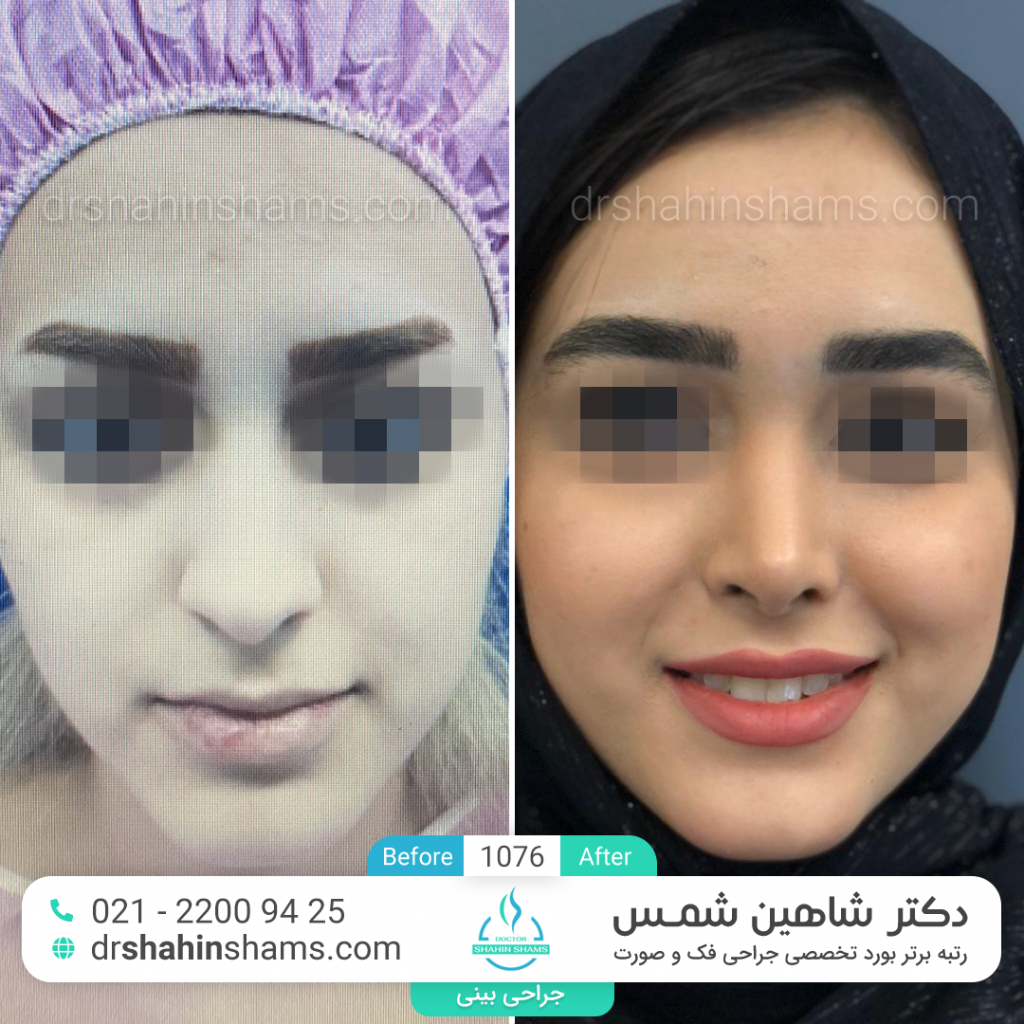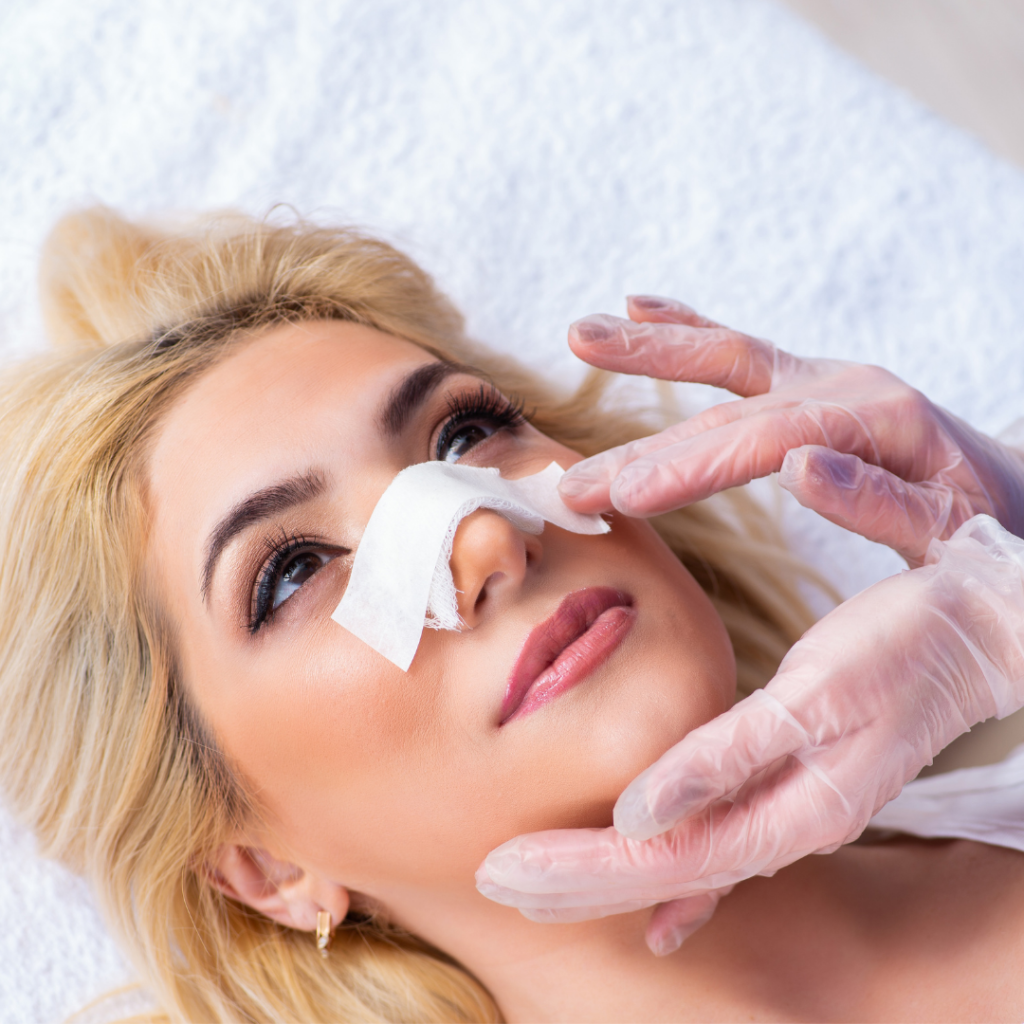In the previous article, we talked about preparations for rhinoplasty. Just like before the operation, after the rhinoplasty, you should follow all the instructions given by your nose surgeon to pass the recovery period well and get the best results. What you read in this article covers some of the important principles and points known as rhinoplasty postoperative instructions.

Rhinoplasty post op care and complications you may experience
There are temporary complications involved with rhinoplasty that are often normal and a direct result of surgery. You should know them as someone who has had rhinoplasty or is caring for a newly operated patient. Some of the most common complications after rhinoplasty are:
- Swelling of the cheeks
- Bruising of the nose skin, around the eyes and the nose
- Swelling around or under the eyes
- Nasal congestion
- Runny nose
- Headache
- Numbness and swelling of the nose and lips
What causes complications of rhinoplasty
You may be interested to know what causes these post op complications. Usually intranasal tissues including bone, cartilage, mucous tissue, skin, and blood vessels are manipulated within the rhinoplasty. In fact, this manipulation is necessary for aesthetical or functional improvement of the nose.
After the operation, the body gradually begins to repair and restore all the manipulated tissues. In fact, the mentioned complications indicate the recovery of skin, facial bones, tissues and sensory nerves. So there is no need to worry and you should continue all postoperative care without stress.
How to relieve rhinoplasty complications?
If you feel any pain after rhinoplasty, you can relieve it with regular painkillers or those prescribed by the surgeon. Of course, do not forget that severe, persistent and chronic pain should be reported to your nose surgeon, immediately.
To relieve any discomfort and reduce nasal swelling, you can use a cold compress, or use one or more pieces of ice in a plastic bag. Apply this compress around the eyes or around your nose to gradually reduce or stop the swelling of the nose after the nose job.
Be sure to contact your nose surgeon if you have any of the following signs:
- High fever with nausea and dizziness
- Any pain that cannot be controlled with painkillers
- Excessive bleeding or secretion from the nose or mouth.
- Excessive ecchymosis or unusual bulges on and around the nose
Nose packing after rhinoplasty
After the operation, the nostrils are filled with tampons. This tampon is impregnated with substances improving the recovery process of the nose and preventing infection. In addition, the nose is covered with nose tape and splint to maintain the new shape of nose. Try not to touch any of the above; nasal packing removal should be done only by your surgeon.

Smoking and drinking alcohol after rhinoplasty
This is probably one of the most important post-rhinoplasty care and it should be considered. Smoking, or other forms of using nicotine, interfere with wound healing. Do not take any nicotine or alcohol for at least 3 weeks after nose surgery.

Activity and exercise after rhinoplasty
Rest to speed up rhinoplasty post op care, but it doesn’t mean resting in bed. While it’s important to rest in the early stages of recovery after rhinoplasty, it’s equally important that you stay active enough and have a regular daily walking.
For example, you can walk your house or yard for 10 minutes every 2 hours or walk in a safe park environment.
Sneezing after rhinoplasty
Try to keep your head up while lying down to help reduce swelling after rhinoplasty. Always keep your head up and don’t bend too much. Don’t blow your nose for any reason. If you have to sneeze, do it through your mouth.

Stress after rhinoplasty
Don’t do any stressful activities and don’t resume any exercise other than walking. Forget all your problems for a while and ask others to help you.
Showering and taking bath after rhinoplasty
Don’t take a shower or bath until the first few days after the nose surgery. If you need to take a bath, shower with extreme caution and without water hitting your nose, dressing or plaster.

Try not to wash your face and above your neck at least. It is very important that the plaster or splint on the nose is always dry. Wetting or softening of this plaster causes damage to the nose shape and movement of bones and cartilage.
Wearing clothes after rhinoplasty
One of the principles of rhinoplasty post-operative care is the provision of comfortable clothing. Wear buttoned, zippered clothing as well as clothes that are completely open. Don’t wear tight-fitting clothing as it can damage the nose. In winter, use only warm, loose and zippered clothes. It is better to prepare appropriate clothes in advance for the recovery period after nose job.
Taking medicine after rhinoplasty
Take all oral analgesics and antibiotics prescribed to reduce or prevent nasal infections as directed by your nose surgeon. Use over-the-counter acetaminophen to reduce pain. Be careful NOT to take 4,000 mg or more of tylenol (acetaminophen) over a 24-hour period.
Sleeping after rhinoplasty
Another nose surgery aftercare that all patients should pay attention to is how to sleep. You should always sleep with your head slightly higher than before. Choose a soft and high pillow holding your head and nose elevated enough. This will help reduce the swelling of the nose and make you have a better recovery period.
Also sleep on your back and try not to grovel. To prevent damage to the nose while sleeping, place two soft pillows on both sides of your head so that it is not damaged due to involuntary movement during sleep.

Diet after rhinoplasty
Paying attention to diet is one of the most important rhinoplasty post-operative instructions. You should drink plenty of fluids for some time after the procedure. Be sure to include cold, non-carbonated, non-alcoholic, decaffeinated, and sodium-free beverages in your rhinoplasty post-operative diet. Milk, natural juices, and yogurt are very tasty and suitable for nose surgery aftercare.

Avoid drinks or foods that are too hot or too cold. Additionally, drink water and beverages with a straw to avoid damage to the nose. It is also better to drink 1 glass of purified water every 2 hours to hydrate the body and accelerate the nose recovery. Be careful to consume only water-rich, soft, and nutritious food in the first 24 hours after the nose surgery.
The first year after rhinoplasty
From the day that nasal swelling gradually subsides, the shape of the nose gets closer to your desired result. During the year after rhinoplasty, the nose continues to change slightly__ and the final result can be seen about one year after the rhinoplasty. In other words, it may take a year for all the swellings to go away and your nose to look its best. Under any circumstances, the results will be better and more acceptable if you consider rhinoplasty post op instructions.
Why recovery after rhinoplasty is long?
The cause for late obtaining the final result is that the nose surgery is one of the most complicated procedures among plastic surgeries and its recovery process is usually unpredictable. Since delicate nasal bones may move slightly, the results may not go as expected. In some cases, a revision rhinoplasty is required in order to reach the desired result.
Nasal shape is influenced by your age
All the tissues of our body get older over time, and as we age, they wear out. Appearance changes, decreased performance, and disability are some of the signs of aging that are considered completely natural. Skin, bones, and cartilage are also subject to aging.
Although an operated nose will retain its beauty for many years, its shape may change slightly over time. This is normal and not a cause for concern. These changes are negligible and are just mentioned to remember that you should have reasonable expectations in terms of surgery and aging, and do not blame the surgeon for the changes in the nose shape after middle age.
